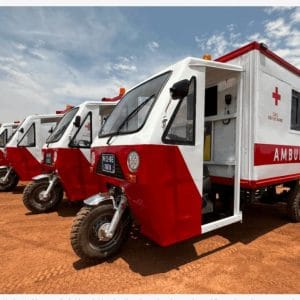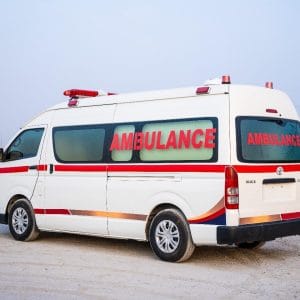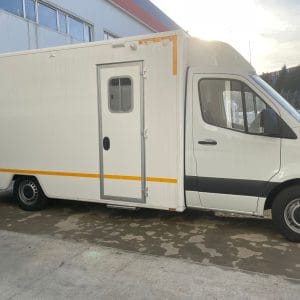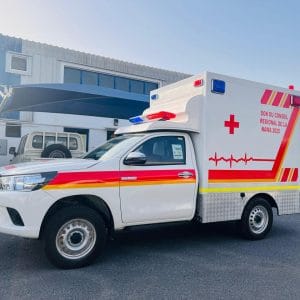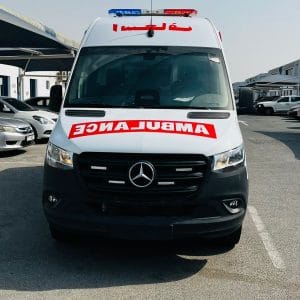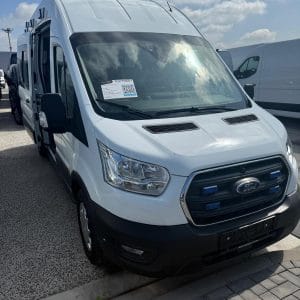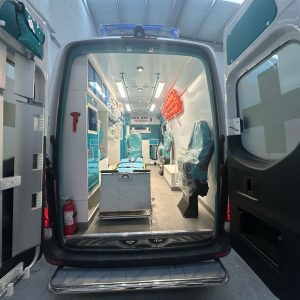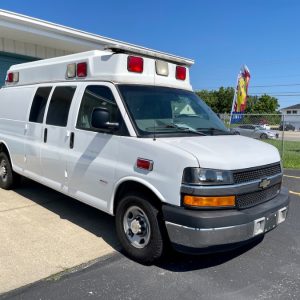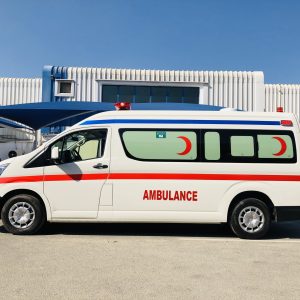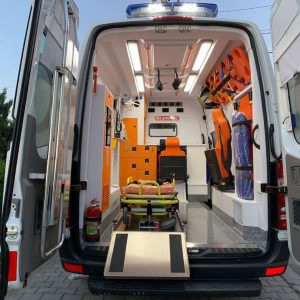Renault Master Ambulance and EN1789; Selecting the right ambulance is a critical decision for any emergency medical service (EMS). It requires a balance of safety, reliability, functionality, and cost-effectiveness. For many fleet managers across Europe, the Renault Master Ambulance represents this perfect balance. Its widespread adoption is a testament to a design that is intelligently engineered from the ground up to meet the demanding EN1789:2020 European standard for road ambulances.
This article explores the key features of the Renault Master that make it an ideal platform for ambulance conversion and how it fulfills the strict criteria set forth by EN1789.
The Foundation: What is the EN1789:2020 Standard?
EN1789 is the paramount European standard governing the construction and performance of road ambulances. Its full title, “Medical vehicles and their equipment – Road ambulances,” hints at its comprehensive nature. Its core objectives are to:
- Guarantee Safety: Ensure the highest levels of protection for both patients and medical personnel through crash testing and stability requirements.
- Optimize workflow: Create an ergonomic interior that allows paramedics to work efficiently in a confined, moving space.
- Ensure System Reliability: Mandate redundant and fail-safe systems for vital functions like electrical power and climate control.
- Provide Clear Classification: Define ambulance types, such as Type C2 (Emergency Ambulance) and Type C1 (Patient Transport).
Compliance with EN1789 is not a luxury; it is a essential requirement for any ambulance operating in Europe.
The Renault Master Advantage: A Purpose-Built Platform
Renault supplies the chassis cab—the foundational vehicle comprising the engine, chassis, and driver’s cabin. Specialized ambulance bodybuilders then perform the complex conversion, building the medical module to EN1789 specifications. The Renault Master is a favourite for several smart reasons:
- Front-Wheel Drive (FWD) Architecture: This is the Master’s standout feature. FWD allows for a significantly lower load floor than rear-wheel-drive alternatives. This makes patient loading and unloading easier and safer, reduces physical strain on crews, and creates a more spacious and accessible interior cabin.
- Excellent Cost-Effectiveness: The Master offers a compelling total cost of ownership. It is typically more affordable to purchase and maintain than some premium brands, making it an excellent choice for budget-conscious public services and private operators without compromising on compliance or quality.
- Functional and Practical Design: The cabin is designed for practicality and driver comfort, with intuitive controls and good visibility—essential for navigating dense urban traffic during emergency responses.
- Efficient Engine Range: Modern energy-efficient diesel engines provide ample performance for emergency duties while helping to keep operational costs and emissions in check.
Meeting the Standard: Key EN1789 Requirements on a Renault Master Ambulance
The bodybuilder’s expertise transforms the standard van into a compliant emergency vehicle. Here’s how the finished Renault Master ambulance meets EN1789’s critical demands:
1. Crash Safety & Dynamic Seat Testing
- Requirement: The attendant’s seat must remain secure and safe for the occupant during a simulated 10g frontal impact.
- Implementation: A certified crash-tested seat (e.g., from brands like SCHROTH) is mounted onto a reinforced subframe. This structure is integrated directly with the Master’s chassis, distributing crash forces effectively and protecting the medic.
2. Vehicle Stability
- Requirement: The completed vehicle must pass a strict tilt table test to prove resistance to rollover.
- Implementation: The Master’s FWD layout and inherently lower center of gravity (due to the lack of a rear differential) provide a stable base. Bodybuilders further enhance this by strategically placing the heaviest equipment low in the vehicle.
3. Medical Compartment Layout & Dimensions
- Requirement: Defined minimum dimensions for internal height, width, and working areas.
- Implementation: The Master’s design, particularly in its high-roof, long-wheelbase configuration, provides ample space to meet these requirements. The flat floor from the FWD layout is a huge advantage, allowing for optimal cabinet and equipment placement and creating an efficient workflow for paramedics.
4. Redundant Electrical Systems
- Requirement: A backup power system must ensure medical equipment continues to function if the main vehicle power fails.
- Implementation: A dual-battery system is installed. The vehicle’s starter battery is isolated from a separate, high-capacity “medical” battery via an intelligent battery isolator, ensuring vital devices like ventilators and monitors remain powered.
5. Warning Devices & Lighting
- Requirement: Specific standards for the intensity and coverage of warning lights and the sound output of sirens.
- Implementation: The vehicle is equipped with powerful, energy-efficient LED lightbars, beacons, and side lights. A multi-speaker siren system is installed to meet the 360-degree audibility requirements, ensuring the ambulance can be seen and heard from all angles.
Common Renault Master Ambulance Configurations
Under the EN1789 standard, the Master is most commonly configured as:
- Type C2 (Emergency Ambulance): This is the primary use case. The long-wheelbase, high-roof Master is the ideal platform for a fully-equipped emergency response vehicle.
- Type C1 (Patient Transport Ambulance – PTA): Smaller variants of the Master are often used for non-urgent patient transfers, where its comfort and accessibility are major benefits.
Conclusion: Intelligent Design for Life-Saving Work
The Renault Master Ambulance proves that premium performance doesn’t always require a premium price tag. Its intelligent front-wheel-drive design offers tangible benefits for EMTs and patients alike, primarily through ease of access and a superior interior layout.
By serving as a robust and cost-effective foundation for EN1789:2020 certification, the Renault Master enables ambulance builders and EMS providers to deploy reliable, safe, and highly functional emergency vehicles. It represents a smart, practical investment in community healthcare, delivering exceptional value and life-saving capability where it matters most.
Evaluating your next ambulance fleet? The Renault Master chassis offers a proven, efficient, and fully compliant path to meeting the EN1789 standard, maximizing your budget without compromising on safety or performance.
Keywords for SEO: Renault Master Ambulance, EN1789, EN 1789:2020, European Ambulance Standard, Type C2 Ambulance, Front-Wheel Drive Ambulance, FWD Ambulance, Emergency Medical Vehicle, Ambulance Safety, Cost-Effective Ambulance, EMS Fleet, Patient Transport Ambulance.



